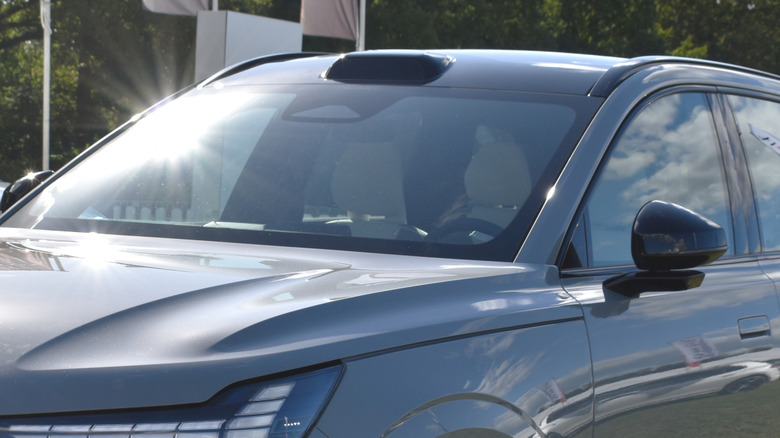The Viral Volvo EX90 Video Explained: How Lidar Sensors Can Ruin Your Phone Camera
A couple of weeks ago, a rather interesting video was shared on Reddit. A person using an iPhone 16 Pro Max tried to capture the LiDAR laser system mounted atop the Volvo EX90 for object detection and making sense of the car's environment. Instead of capturing clear footage, the phone's camera sensor started acting erratically, and numerous dot-shaped color artifacts started filling in the viewfinder.
Now, before we dig into the details of the how and why, here's the lowdown. Yes, the high-energy infrared beams shot by the LiDAR sensor can damage your phone's camera. "The lidar, being a laser based system, uses infrared light waves that may cause damage to certain camera devices. This can include smartphones or phones equipped with a camera," Volvo warns on its website.
Next, if you look at the video closely, you will notice that the camera sensor only seems to be affected when zooming in (using the telephoto sensor), but doesn't act weird when the regular wide-view sensor is being used. Well, that has to do with the fact that the primary camera has a much wider aperture (f/1.78) compared to the zoom camera (f/2.8) on the flagship Apple smartphone. Plus, the light tunnel leading to the zoom camera sensor has multiple lenses and prism elements to deliver more focused for sharp long-range capture. This narrower and more focused pathway is what caused the zoom camera to respond quicker to the pulsing infrared beams compared to the wider aperture main sensor.
A destructive game at nano scale
The LiDAR system fitted on the Volvo EX90 is supplied by a company named Luminar. Now, such systems either employ the infrared beams of 1550 nanometer wavelength, or the 905/940 nanometer cluster. Luminar, which supplied the Iris LiDAR module, deems the 1550 nanometer infrared system to be more effective. According to Luminar, 1550nm LiDAR systems can send 17 times more photons (or packets of light) than the 900nm series kits to achieve an equivalent boost in image resolution and a four times higher coverage range.
This is where the problems begin for smartphone camera sensors. You see, the 1550 nanometer beams are particularly dangerous for the CMOS image sensor (CIS), the fundamental kit powering the cameras fitted inside modern-day smartphones. According to a research paper published in the Optics Express journal, exposure to 1550 nanometer infrared beam generated by LiDAR kits can cause "point damage, line damage, and cross damage" to camera sensors.
The biggest share of the damage is taken by the Bayer filter, which is responsible for color sensing. When focused 1550 nanometer falls on the filter, it causes rapid heating. "When the absorbed laser was sufficient, the Bayer filter reached the boiling point and splashing, part of the micro-lens and the Bayer filter was missing due to thermal pressure," explains the research paper. The underlying metal wires also take damage, eventually leading to optical damage, short circuit, and melting of the photodiode. In a nutshell, don't point your camera at the LiDAR sensor on a Vovlo EX90, or any other car for that matter.
